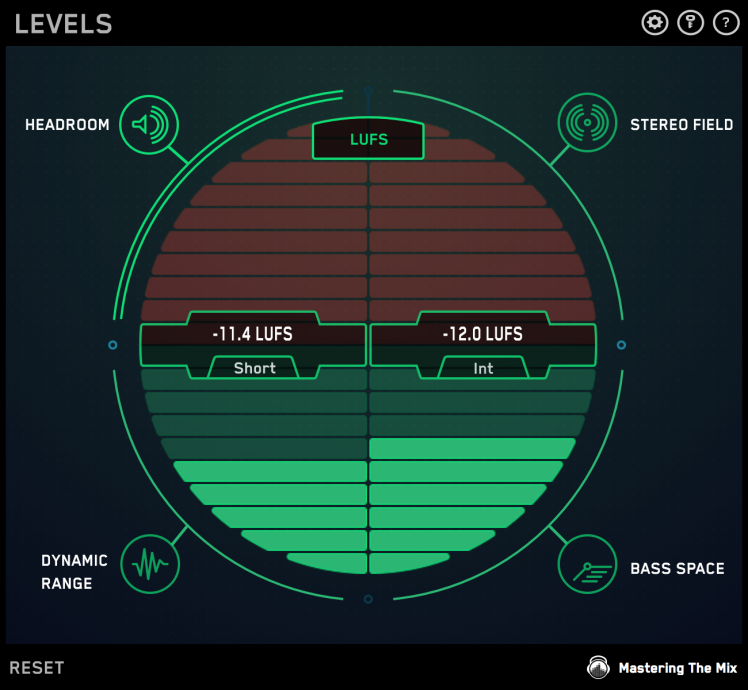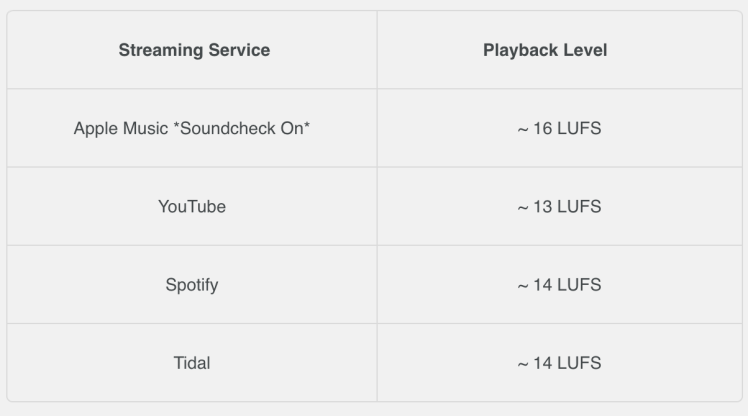A Blog about Mastering to Online Mediums

So, picture this right. You’ve got a track that has been recorded and mixed well and mastered the track so its loud. But once you uploaded it to your online medium, it become s quiet, far quieter than everything else in your genre. The reason for this is a little thing called LUFS; Loudness Units Full Scale.
Loudness and LUFS
Also known as volume, Loudness is the output audio from any medium (other than a mixing console or similar device as dB measurements and sample peaks are better to work with). Different genres and mediums of audio play have different levels that are set. T.V commercials and Radio have drastically different levels of loudness and volume within their audio. For a long time, there wasn’t much in the way to limit the loudness of things, which resulted the chaos everything being too loud and too soft. Aside from giving you a worn out volume button on your T.V remote, this feature was becoming a little destructive as your T.V show could be quieter than the adds. This has since been tamed down by some people that invented LUFS. This ingenious invention was designed to set a limit not on the maximum loudness of the audio being presented. This loudness control isn’t based on sample peak but rather. How the listener perceives the sound. “The concept of a loudness unit is identical to a decibel. However, the loudness units measurement system is weighted to the real perception of audio rather than just the electrical signal” (Mastering Box, 2018)

Mastering to the Limits
When mastering a track, this is the last thing you’ll be checking. Your output LUFS can and will impact on your track when they are played on every online medium. To alleviate this issue in the best way, you’ll have to do separate masters for each individual medium your releasing to as most differ from each other. So, if you were to master your track for Spotify, YouTube, Pandora, Apple Music and Tidal, you’ll need to have separate masters for most of these and here’s why… If you happen to master for Spotify, which sits at a pretty -14 LUFS, and happen to master your track to -9 LUFS, your track will be turned down back to -14 LUFS, by removing 5 dB from the mix, making your track much quieter. As the general human population does with most things, we like big and loud things far more than the quiet things. If something is louder than something else, you’ll notice the loud thing first. This logic was used before LUFS was implemented causing a contest for who could be the loudest, which made for uneven back to back albums as some were louder than others. Today, LUFS uses this logic and flips it on its head. As if you try to make your track as loud and compressed as possible, you will find that it will be turned down. This intern gives you a quiet mix (due to the track being turned down to the specified loudness of the medium) and an dynamically boring mix (due to the ‘squashing’ of the mix by the compressor in the effort to make the track louder)
Just something to keep in mind when mastering.
Ciao
Wyatt Nicholls
Novice Recording Engineer
Student at SAE
References:
TC Electric. ( n.d ). Loudness explained. Accessed at https://www.tcelectronic.com/brand/tcelectronic/loudness-explained#googtrans(en|en)
Dunfy, T. (28/07/2017). Understanding LUFS Metering system. Accessed at https://www.masteringbox.com/lufs-metering-system/
Mastering The Mix. (08/05/2016). Mastering audio for Soundcloud, iTunes, Spotify and Youtube. Accessed at https://www.masteringthemix.com/blogs/learn/76296773-mastering-audio-for-soundcloud-itunes-spotify-and-youtube
[Image] https://www.masteringthemix.com/pages/mastering-with-levels
[Image] https://www.masteringthemix.com/blogs/learn/76296773-mastering-audio-for-soundcloud-itunes-spotify-and-youtube